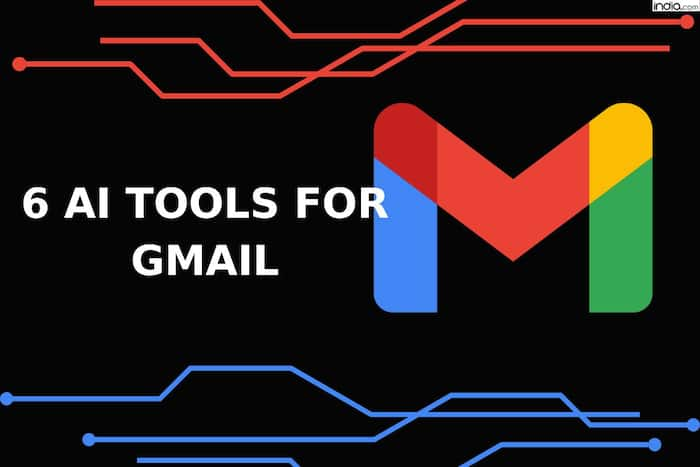Did you know Gmail AI tools to help you save time writing, replying or organising your mails? Check out these six AI-powered features to make the most of Gmail right now.

New Delhi: Gmail is one of the most widely used e-mail services, which was launched by Google way back in 2004. Since then, the free email platform has seen a wide array of upgrades and improvements. Like most Google products and services, Gmail too has some lesser-known AI superpowers that can boost your productivity and help you save time. Here are six AI-powered features that help you make the most of Gmail right now.
Help Me Write
The Help Me Write features is a tool that can create entire email drafts based on simple prompts. It’s currently available as part of the Workspace Labs program, and you can sign up online to express your interest in joining the program. Once you have access to the tool, you’ll see the “Help me write” icon when you go to Compose a New Email in Gmail. Look for the star with a pencil, and add a prompt explaining what you’d like your email to be about. Here is how to use it:
- Click on the “Help me write” icon in Gmail.
- Add a prompt explaining what you’d like your email to be about.
- Click “Create” to see a full draft based on your prompt.
- Choose “Insert” or check out the “Refine” button to make some tweaks.
- Select options to make your email more formal, more elaborate, or shorter, depending on your needs.
- Try “I’m feeling lucky” to see what tone “Help me write” comes up with.
“Help me write” uses generative AI large language models to interpret your prompt and decide what combination of words best represents your request. This new technology builds on past generative models used for Gmail’s Smart Compose and Smart Reply features.
Smart Compose
Smart Compose is a feature that provides wording suggestions while you’re writing an email draft. It uses a hybrid language generation model and runs it on tensor processing units (TPUs) to show wording suggestions. A simple tap of the “Tab” button accepts the suggestion and incorporates those words into your email draft without you having to fully type them out.Smart Compose can help users write more efficiently and learn new phrases. It’s available in English, Spanish, French, and Italian.
Smart Reply
Imagine getting an email from a friend asking if you can make it to their party this Saturday, right before you jump into back-to-back meetings. Imagine that you can send an answer to your friend in seconds without typing anything.
Smart Reply is a feature that generates up to three possible responses to emails you receive. With two clicks or taps, you can select and send your response.Smart Reply uses advanced machine learning technology like deep neural networks to identify an appropriate set of potential replies from a large set of diverse, nuanced responses. This means that instead of simple replies to your friend’s invitation like “Yes,” “No,” or “Maybe,” you’ll see more nuanced options like “Sounds great, count me in,” “Sorry, I can’t make it tomorrow,” or “Awesome, I’ll be there!”.
Tabbed Inbox
The tabbed inbox is a feature that helps you navigate your inbox more easily by automatically categorizing emails into different tabs based on their content. Gmail tabs rely on a classification system that uses machine learning to decide where an email should go based on different signals, like who sent the email. The messages then go into one of five different inbox tabs: primary, promotions, social, updates, and forums.
To automatically categorize emails, Gmail uses a combination of neural network-based machine learning and heuristic algorithms. To respect user privacy, Gmail’s algorithms learn how to categorize emails from aggregated and anonymized information.
Summary Cards
Summary cards are a feature that displays important information from emails at the top of the message, making it easier for you to quickly understand the content. Using heuristic and machine learning algorithms, summary card technology automatically looks for certain data from inbound emails to understand what type of message it is and the most important content in the message.
Summary cards can be found at the top of emails like flight ticket reservations, online shopping purchases, hotel bookings, restaurant reservations, ticketed events like concerts, and Google Calendar invites.
Nudging
Nudging is a feature that reminds you to reply to or follow up on important messages. It uses a machine learning model to detect which emails you haven’t replied to and predict which of them you’d normally answer. After a few days, it will automatically bring the message to the top of your inbox with a note saying you received it three days ago and asking if you want to reply.
Nudging is also able to remind you of outgoing messages you haven’t heard back about. If you send someone an email and it’s been more than three days without a response, Nudging reminds you with a notification in your inbox asking if you want to send them a follow-up.

